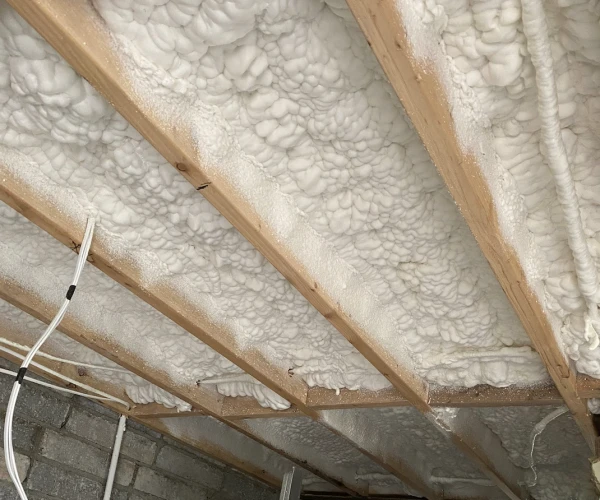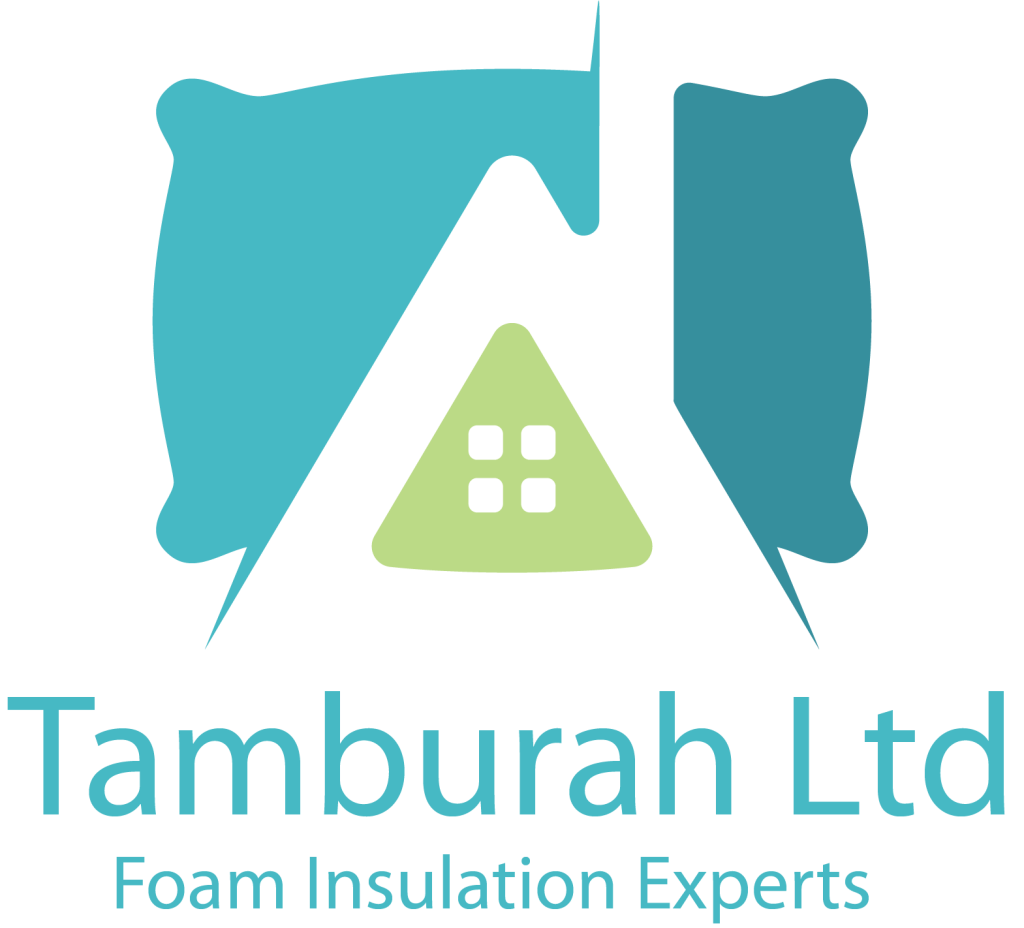
Everything You Need to Know About Spray Foam Insulation: Costs, Benefits, and Installation
Staying comfortable in your home year-round is a priority, but keeping those energy bills under control can be a challenge. Spray foam insulation is gaining popularity as a solution, offering superior thermal performance and energy efficiency. However, understanding the costs involved is crucial before making a decision. This guide will explore everything you need to know about spray foam insulation, from its benefits to installation and, of course, the associated costs.
What is Spray Foam Insulation?
Spray foam insulation is a versatile and effective method of insulating buildings. It is made from polyurethane, which is applied as a liquid that expands into a foam. This foam then hardens, forming a solid layer that fills gaps, cracks, and crevices. There are two main types of spray foam insulation: open-cell and closed-cell. Each has its specific applications, advantages, and cost implications.
Understanding Spray Foam Insulation Costs
When considering spray foam insulation for your property, understanding the costs involved is crucial. The overall spray foam insulation cost can vary depending on several factors, including the type of foam used, the size of the area to be insulated, and the complexity of the installation.
Factors Influencing Spray Foam Insulation Cost
1- Type of Spray Foam:
Open-cell spray foam: This is lighter and more flexible, making it ideal for residential applications. It typically costs between £30 and £70 per square metre. Open-cell foam is generally less expensive but offers a lower R-value (insulation effectiveness).
Closed-cell spray foam: This type is denser and more rigid, providing a higher R-value per inch. It is better suited for commercial applications and areas where moisture resistance is a priority. Closed-cell foam costs range from £50 to £90 per square metre.
2- Area Size: The larger the area, the higher the total cost. For instance, attic spray foam insulation cost will be significantly higher for a large attic compared to a smaller one.
3- Labour Costs: Professional installation is essential for spray foam insulation, adding to the overall expense. Labour costs typically range from £150 to £200 per day in the UK, depending on the project’s complexity.
4- Location: Prices can also vary based on where you are located. For example, spray foam insulation in the city may be more expensive than in rural areas due to higher labour costs.
5- Preparation and Additional Work: If your property requires preparatory work, such as moving electrical wiring or adding loft boarding, these tasks can increase the overall cost.
Calculating Spray Foam Insulation Cost
To get a rough estimate of spray foam insulation costs, multiply the area to be insulated by the cost per square metre of the chosen foam type. For example, if you have 100 square metres of attic space to insulate with open-cell spray foam, the total material cost could range from £3,000 to £7,000. Don’t forget to add labour costs to this figure.
For a more accurate assessment, it’s advisable to consult with a professional insulation installer who can provide a detailed quote after a site survey.
The Benefits of Spray Foam Insulation
Choosing the right insulation is crucial for enhancing your property’s energy efficiency, comfort, and overall value. Spray foam insulation offers several significant benefits over traditional insulation methods, making it a worthwhile investment.
Superior Energy Efficiency
Spray foam insulation is highly effective at reducing energy loss. It expands to fill gaps and cracks, creating an airtight seal that significantly reduces air leakage. This airtightness helps maintain a consistent indoor temperature, reducing the need for heating in winter and cooling in summer. Homeowners can save up to 50% on their energy bills, making spray foam insulation cost-effective in the long run.
Long-Lasting Durability
One of the most compelling spray foam insulation benefits is its durability. Unlike traditional insulation materials that may sag, settle, or degrade over time, spray foam maintains its form and insulating properties for decades. Properly installed spray foam can last the lifetime of a building, reducing the need for future re-insulation.
Moisture and Pest Resistance
Spray foam’s dense structure also acts as a barrier against moisture and pests. Closed-cell spray foam, in particular, is highly resistant to water infiltration, which helps prevent mould growth and structural damage. Additionally, the solidified foam creates a barrier that deters insects and rodents from entering your home.
Noise Reduction
Another benefit of spray foam insulation is its soundproofing capabilities. The foam’s ability to fill gaps and create a seamless barrier significantly reduces the transmission of noise, making it an excellent choice for insulating walls and ceilings in residential properties.
Enhanced Property Value
Investing in spray foam insulation can also increase your property’s value. Prospective buyers often look for energy-efficient homes, and the superior insulation provided by spray foam can be a significant selling point. The long-term energy savings, combined with reduced maintenance needs, make spray foam insulation an attractive feature
Installation Process: What to Expect
Spray foam insulation installation is a process that requires professional expertise and specialised equipment. Here’s a step-by-step overview of what you can expect during the installation.
Step 1: Pre-Installation Survey
Before installation, a professional installer will conduct a survey of the area to be insulated. This survey will assess the size of the space, identify any potential obstacles, and determine the type of spray foam best suited for your needs. The installer will also check for any preparatory work that might be necessary, such as clearing out old insulation or relocating electrical wiring.
Step 2: Preparation
Once the survey is complete, the area must be prepared for insulation. This might involve removing existing insulation, sealing off areas not to be sprayed, and protecting fixtures and fittings from overspray. The installer will ensure that the space is ready for the application of the spray foam.
Step 3: Application
The application process involves spraying the foam onto the surfaces that need insulation. The foam is applied as a liquid, which quickly expands and hardens to form a solid, insulating layer. The installer will apply the foam evenly, ensuring that all gaps, cracks, and crevices are filled. Depending on the type of foam and the area size, this process can take anywhere from a few hours to a full day.
Step 4: Curing and Ventilation
After the foam is applied, it needs time to cure. Curing time can vary depending on the type of foam used, but it typically takes about 24 hours. During this period, proper ventilation is crucial to allow the foam to harden and to disperse any fumes produced during the application process.
Step 5: Final Inspection
Once the foam has cured, the installer will conduct a final inspection to ensure that the application is even and that all areas have been properly insulated. The installer will also check for any overspray or areas that may need touch-ups. After this inspection, the space is ready for use.
Long-Term Savings and Return on Investment
While the initial spray foam insulation cost may be higher than traditional insulation options, the long-term benefits often outweigh the upfront expense. The energy savings alone can help homeowners recoup their investment within a few years. Additionally, the durability and low maintenance requirements of spray foam insulation contribute to its overall cost-effectiveness.
Return on Investment (ROI)
The ROI for spray foam insulation varies depending on factors such as the size of the property, the type of foam used, and local energy costs. However, many homeowners find that they can recoup their investment within 3 to 9 years. For example, insulating a typical three-bedroom semi-detached house could save up to £540 annually on energy bills, meaning the initial cost could be recovered in about 6 to 8 years.
Conclusion
Spray foam insulation is a powerful solution for enhancing the energy efficiency, comfort, and value of your property. While the initial spray foam insulation cost might be higher than other insulation methods, the long-term benefits, including energy savings, durability, and added property value, make it a worthwhile investment. Whether you’re looking to insulate an attic, walls, or other areas, spray foam insulation offers a comprehensive solution that outperforms traditional options.
When considering spray foam insulation for your property, it’s important to work with a reputable installer who can provide expert advice and ensure a high-quality installation. Tamburah, a leading provider in the Irish market, offers expert insulation services that are tailored to meet your specific needs. With their extensive experience in both residential and commercial sectors, Tamburah Ltd ensures that each project is executed with precision, delivering long-term energy efficiency and comfort. By choosing a trusted installer like Tamburah Ltd, you can enjoy the full range of spray foam insulation benefits and make a sound investment in your property’s future.
